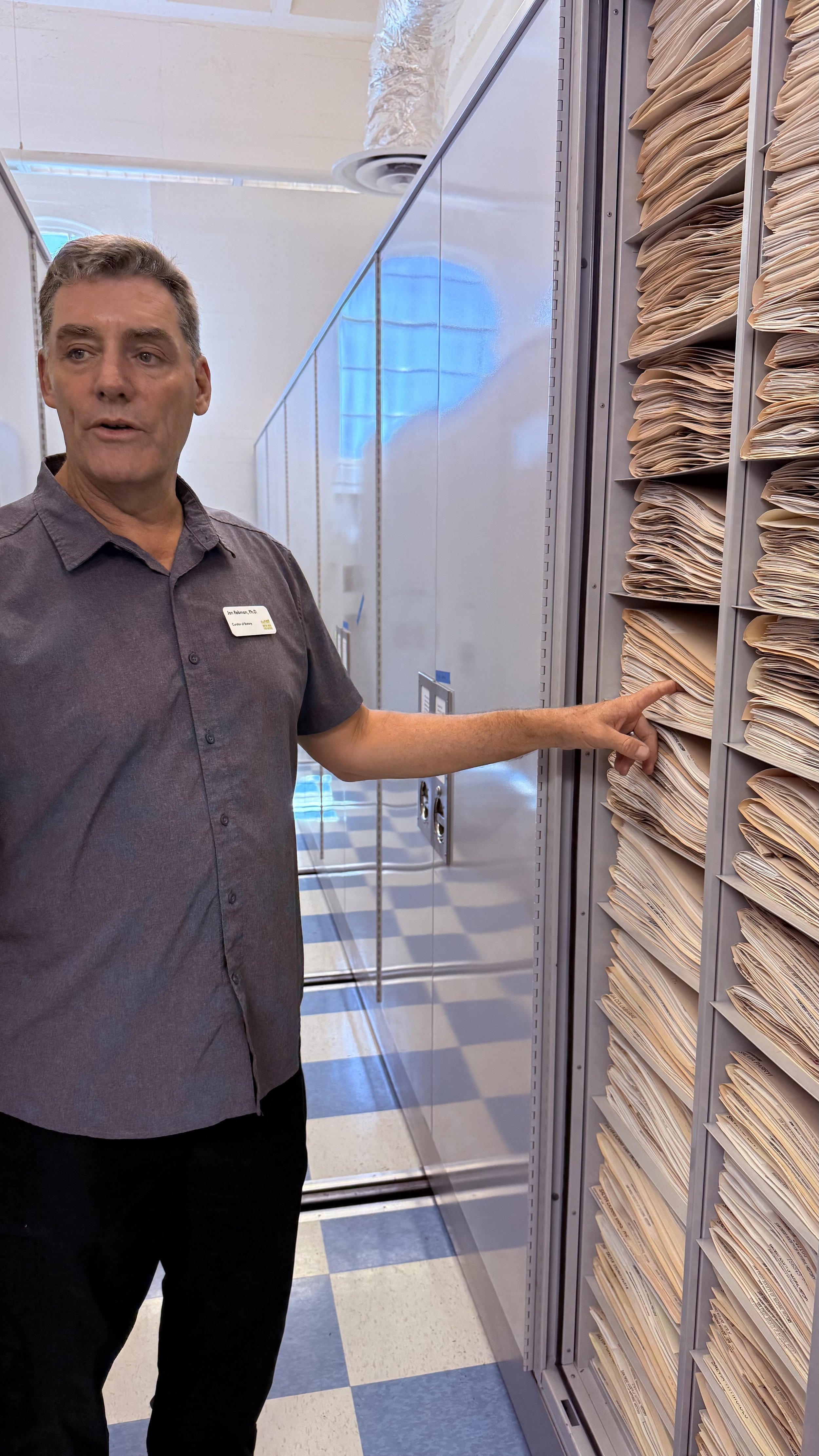The first-year cohort of grad students for our Environmental and Ocean Sciences MS program went on one of their site visits recently, exploring career paths outside of traditional academia; learning how other scientists ask and answer questions; and discovering how incredibly nonlinear almost every scientist’s pathway is on their journey to their career.
This week, we were fortunate to visit the San Diego Natural History Museum (the Nat). I have had a lifelong relationship with the Nat - I LOVED visiting there when I was a little kid, and I have had the good fortune to work with them over the years, starting with back when Exequiel Ezcurra was there in the early 2000s (if you do not know him you SHOULD! Not just a brilliant scientist, but a delightful, wise, and kind person).
This trip we got to meet with Jon Rebman, the Nat’s curator of botany, and one of the luminaries in botanical research. Jon is not just a remarkably nice person but is also among the world’s experts on plants in southern and Baja California. He talked about the range of valuable lessons we can learn from these museum collections - not “just” what species we actually have, but what ones we have lost, what ones we have rediscovered, records of indigenous uses and language, what the relationships are between these species - the list honestly goes on and on, but the short version is that the work the Nat and other museums are doing is extraordinarily valuable across a range of disciplines! Just one small example - Jon Rebman and researchers from the Salk Institute extracted multiple chemicals with neuro-regenerative and anti-inflammatory properties from dried museum specimens of Yerba Santa, a common plant in San Diego County that the Kumeyaay (and other indigenous people) have used to treat a number of illnesses. These chemicals could be an effective therapy for people with dementia or Alzheimer’s disease.
And seeing row upon row of samples dating back hundreds of years was inspiring!
We also got to see a part of the museum I have never seen before - the Research Library. Ariel (Arie) Hammond is the Director of the Research Library, and her job seems simultaneously daunting and amazing. She showed us these amazing collections of - well, seemingly everything! She curates the Valentien collection - >1,000 exquisite watercolors of wildflowers, commissioned by Ellen Browning Scripps (yes, THAT Scripps) back in 1908.
But the collection has so much more - boxes holding thousands of amazing 35mm slides of birds, rare, one-of-a-kind books - all of it irreplaceable and being curated and preserved by the Nat, under Arie’s guidance.
Probably my favorite piece that Arie showed us was a book, commissioned for President Grant by his grandson (who was a paleomalacologist - who knew?), titled “Most Important Grasses of the Field and Forest”, published in 1871. This magnificent book is in three languages, with gold leaf everywhere, and within the pages he affixed numerous dried specimens.
I am deeply appreciative of the Nat, Jon, Arie, and honestly all of the amazing staff there who do such important work. It was a delight that they made time for Environmental and Ocean Sciences students from University of San Diego to experience these wonders!






